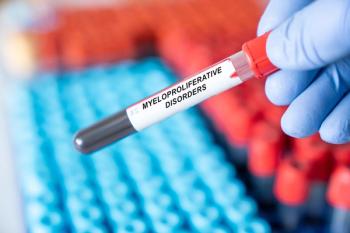
Analysis Demonstrates Effectiveness, Patient Satisfaction With Lanreotide in GEP-NETs
An interim analysis of somatostatin analog lanreotide depot presented at the North American Neuroendocrine Tumor Society annual meeting, held October 4-6 in Seattle, Washington, found that the treatment was effective in disease control and most patients were satisfied with the treatment.
An interim analysis of real-world outcomes collected from patients with gastroenteropancreatic neuroendocrine tumors (GEP-NETs) treated with lanreotide (Somatuline) depot demonstrated that treatment with the somatostatin analog was effective in disease control. The analysis, presented at the North American Neuroendocrine Tumor Society annual meeting, held October 4-6 in Seattle, Washington, also found that most patients were satisfied with the treatment.
At least half of NETs—rare and often slow-growing forms of cancer arising from the endocrine system—originate in the small-bowel, colon, stomach, or pancreas, and are collectively known as GEP-NETS. In December 2014, lanreotide gained FDA approval for the treatment of unresectable, well- or moderately-differentiated, locally advanced or metastatic GEP-NETs.
The analysis of the treatment followed 50 patients aged 18 and older who had locally-advanced or metastatic disease, well-differentiated NET, were initiating or previously treated with lanreotide depot, and had measurable disease. The study also took into account Eastern Cooperative Oncology Group Performance Status (ECOG-PS), which assesses how a patient's disease is progressing, assesses how the disease affects the daily living abilities of the patient, and determines appropriate treatment and prognosis. Patients included in the study had scores of 0 to 2, ranging from fully active to capable of all self-care but unable to carry out any work activities.
Patients were treated with 120 mg of subcutaneous lanreotide depot every 28 days and were examined every 6 months for evaluation of clinically defined outcomes based on disease progression an overall survival (OS), as well as symptoms (flushing/diarrhea), treatment satisfaction, and adverse events.
At 1-year follow up, the median age was 65, 84% of patients were Caucasion, 96% had an ECOG-PS of 0 or 1, and 36% had octreotide long-acting release experience prior to the study. Progression-free survival was 92% (95% CI: 79-97) and OS was 96% (95% CI: 84-99). There was largely no change in flushing or diarrhea, and more than 80% of patients reported still being satisfied with the treatment.
The main reasons for discontinuing treatment were disease progression (10%) and adverse events (4%). The main adverse events reported were nausea (6%), fatigue (4%), and abdominal pain (4%).
Reflecting on the analysis, which provides the first prospectively collected real-world outcomes of patients treated with lanreotide depot for GEP-NETs, the researchers wrote, “Interim results suggest lanreotide depot is effective in disease control and most patients are satisfied with their treatment.”
Newsletter
Stay ahead of policy, cost, and value—subscribe to AJMC for expert insights at the intersection of clinical care and health economics.













































